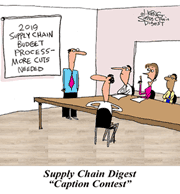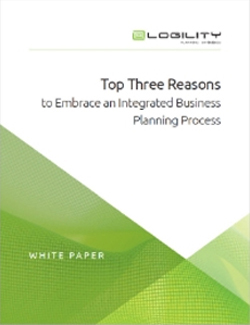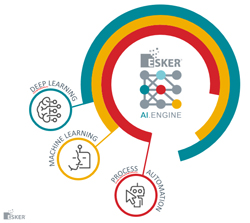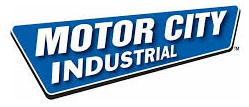A Look Back at Achieving Supply Chain Excellence through Technology
As I often do over long holiday weekends, I spent a decent amount of time over Thanksgiving cleaning up my office.
It's not a trivial task - I am something of a pack rat by both nature and avocation, and I am admittedly reluctant to toss materials that I believe may be useful in the future or have some historical value.
That said, I always unearth some minor treasures, whether they are put back on the bookshelf or destined for the recycle bin.
| GILMORE SAYS: |
I liked this statement early on: "The role of inventory is one of the most misrepresented factors in the financial world."
WHAT DO YOU SAY?
Send us your
Feedback here
|
And so it was I found several copies of something called "Achieving Supply Chain Excellence through Technology," or ASCET. This was basically a book of articles on numerous and varied supply chain topics that was put together for a number of years starting in the late 1990s by a company called Montgomery Research. Consulting firm Accenture was the major sponsor.
I have fond memories of these books, which if you registered showed up in your physical mailbox at no charge each year. Inside were dozens of articles from a variety of sources, including practitioners, consultants, academics, industry analysts and technology vendors, who got spots in the publication for paid sponsorship. But these were generally better than the normal vendor articles.
Supply chain thinking was still in its early stages at this point, and here in one place were a number of high quality thought leadership pieces. The ASCET publication is long gone, as it appears is also Montgomery Research, and it is a little sad there is not a spot in the supply chain world for this kind of publication, though Supply Chain Management Review and CSCMP Supply Chain Quarterly offer similar content on a smaller but more frequent basis.
I believe ASCET was the vehicle in which an HP executive wrote a very influential article describing the company's highly successful use of postponement techniques to delay final customization of its printer products and better manage supply and demand.
So I grabbed the 2004 edition of ASCET (it appears the second to last) and decided I could use this column to review some of the supply chain thinking then to see how it stacks up today. There's an Accenture ad on the back cover featuring Tiger Woods "Do you want to improve your game, or change the same itself?"), and articles from many long gone supply chain vendors, but the trip down memory lane was a good experience, and hopefully you'll feel the same with this summary.
John Matchette of Accenture and Dr. Hau Lee of Stanford kicked things off with a fine article on the business value of supply chain excellence, a topic still clearly very much germane in 2018.
Using a quantitative approach to classify the supply chain excellence of more than 600 global companies, Matchette and Lee then compared those results to several measures of financial performance.
In terms of market capitalization, for example, the analysis found supply chain leaders enjoyed annual growth between 7 and 26 percentage points higher that the average company growth. Over just a few years, that type of better CAGR performance would have a huge impact. Would the analysis still hold up today? Interesting question.
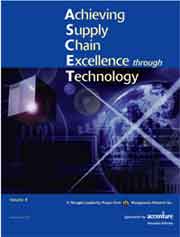 But then there's this: GM's Saturn division was cited in the article for its excellence in the aftermarket parts supply chain. The long term lesson may just be that the greatest supply chain in the world isn't going to save a company that designs products customers do not want to buy anymore. But then there's this: GM's Saturn division was cited in the article for its excellence in the aftermarket parts supply chain. The long term lesson may just be that the greatest supply chain in the world isn't going to save a company that designs products customers do not want to buy anymore.
Dell's then VP of manufacturing, Dick Hunter, whom I met a couple of times, did an interview for this edition. Towards the end of that interview, he was asked about supply chain visibility.
"We have a lot of visibility to supply chain today, but I would like to have total visibility," Hunter said. He added that for suppliers, Dell wants to "know when they're scheduling products for Dell. I want to know the total supply chain, and eventually I want to know what their supply chain issues are."
I know that Dell specifically and other tech companies have made good progress towards these goals Hunter cites, but I think no one has reached the "total visibility" level yet. Right or wrong?
RFID hype was about at its zenith in 2004, with the Walmart mandate just getting started (before its ignominious flop a few years later). That not surprisingly led to a whole section of the book on RFID, and about a dozen individual articles - quite interesting, actually, versus how things played out.
In a sponsored piece, Tom Gibbs of Intel says "The excitement with RFID is the ability to apply automatic (no human in the loop) tracking of goods from manufacturing though sales and in some cases post sales, and apply new business processes to take advantage of the improved information accuracy."
Gibbs actually predicts RFID will solve the infamous Bullwhip Effect in order patterns.
Most would have thought in 2004 that in the consumer goods to retail supply chain at least, RFID would have been almost ubiquitous by now, and be providing the types of insight Gibbs expected. It hasn't happened. Despite some recent progress for item-level RFID by some retailers (e.g., Macy's, Target), driven largely ecommerce needs for highly accurate inventory counts, we are still many years away from end-to-end visibility, that's for sure.
And while we may be whittling away at the Bullwhip Effect over time, RFID is no longer really part of that conversation.
Analyst Noah Tohamy, then of Forrester, now of Gartner, also looks at RFID in the 2004 ASCET. She rightly noted lots of RFID data itself will not provide visibility, it will require software analytic solutions to do that. Tohamy was also understandably at the time bullish on RFID's future in consumer goods to retail and beyond, predicting 3PLs would quickly develop a "cost effective solution to collect, filter, and communicate the required inventory and asset data" for mid-sized companies that can't afford to develop their own capabilities.
That probably would have been true - if only the Walmart RFID program hadn't fallen apart.
The late John Fontanella of the then AMR Research was a bit cautious but in the end also bullish, saying the real value of RFID would come from a stage he labeled "synchronization," in which there would be "ubiquitous use of RFID across an industry, installed within thousands of companies."
Such a scenario "would conjure up visions of a totally efficient supply chain," Fontanella added, saying in the end this is where the real value of RFID would be realized. 14 years later, I think we still have a long, long way to go on that one.
My review finds the best article in ASCET 2004 is one on supply chain risk management and more by Andre Kuper and Venu Negali, both of HP.
I liked this statement early on: "The role of inventory is one of the most misrepresented factors in the financial world."
Why? Assuming that one number is somehow indicative of the health of the supply chain is off base, they say, and warn of the dangers of decisions made based on averages. They also says inventory is often a lagging indicator due to the Bullwhip Effect.
HP famously at this time had been developing a set of tools to improve decision-making in terms of risk management. For example, you can protect against demand uncertainty by adding supply chain flexibility or increasing inventory - but are the extra costs involved worth it? Not sure most companies yet today really have tools to answer that question.
But they add this: "Measuring the impact of risk management is one thing; aligning the metrics of the people involved with the desired behavior requires additional investment and changes to the culture and the division of labor."
Those change management issues are never going away.
I believe this was far from the best ASCET book, both generally and especially given the now obvious excessive focus on RFID, but it was fun to review. The three versions I have our staying on the bookshelf. I will note used and new copies are available on Amazon.
Do you fondly remember the ASCET books? Any articles come to mind? Any reaction to Gilmore's review of ASCET 2004? Let us know your thoughts at the Feedback button below. |



![]()

![]()

![]()



